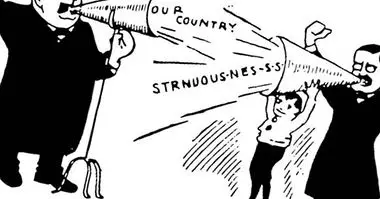Precariat: the new social class of enslaved youth
The precariat is a modern term conceptualized by the economist Guy Standing in 2011, when the world economic crisis had consolidated and deepened in the so-called First World or developed economies such as Spain, France or even Germany, the economic engine of Europe.
In a way, the precariat stands as a new emerging class, a new mass phenomenon that requires, according to experts, urgent attention to be able to resolve potential crises for the following decades. It is no longer just a question of the economic needs of individual people, but the complexity will come from can not guarantee minimum social welfare .
- Related article: "Poverty affects the brain development of children"
What exactly is precarious?
Textually, the precariate is a hybrid between the concepts of precarity and the proletariat , given that it is a working class of middle or lower class, whose economic aspirations are matched by their success in finding work, and live in the instability that currently generates the labor market.
Precarious for the following reasons: this new class faces unprecedented job insecurity , to a volatility of the labor market and to a lack of definition and classification of a specific identity as a working class.
- Related article: "Burnout (burn syndrome): how to detect it and take action"
Causes that have given rise to the phenomenon
Some expert economists and political analysts such as the mentioned guy Standing, father of the definition, the renowned doctor in economics Santiago Niño Becerra or Professor José María Gay de Liébana among others, point directly to the capitalist system in general, and the Globalization system in particular .
In a certain sense, the precariate is even below the poor who work many hours and the labor force / salary remuneration relationship has a mismatch, since in some cases it does not charge the stipulated by law, as in the case of the fellows or those workers who need to perform multiple jobs and who do not even reach a minimum to pay for their lives.
Global Globalization has caused this new social class to spread across the globe, due to its asymmetric economic policies, its extremely harsh working conditions in some cases and its policy of free movement of people ; Migrations are another mechanism for the perpetuation of the precariat.
- Maybe you're interested: "Work addiction, related to psychiatric disorders"
The 3 types of the precariado
Within this worrying phenomenon, there are different types of classification according to the nature of the precarious . They are the following.
1. Immigrant youth
This group responds to that generation of young people who have had to emigrate from their countries of origin due to lack of social guarantees such as public health, education and, of course, lack of job offer. The problem is that the destination country has the same complexity.
2. Young people with university degrees
In this case the situation is even more serious. Here the most prepared generations in history, have an education and knowledge that surpass or exceed the needs of the labor market. That is, they become so excellent in their abilities, that are excluded from the professional offer . In this context, his reaction to the labor scene can be one of great frustration or, at the other extreme, of a feeling of resignation that Bertrand Regader defined as 'satisfied slave syndrome'.
3. The seniors
Surely it is the most urgent case to attend. Seniors are those elderly people, between 40 and 55 years old, who have stayed outside the labor market by failing to meet the requirements demanded by the economy modern (technologies, displacements).
What do these groups have in common?
As we have already pointed out, the precariat is a socio-economic group that is characterized by distinctive features: labor instability (they do not manage to have fixed contracts), the remuneration for their work lacks social guarantees (they are paid below the legal in most cases) and are also deprived of some civil privileges such as paid vacations or leave days that the rest of society enjoys.
Unlike the working class typical of the industrial revolution era, the precariate has even less security to find work, and the areas in which they can work are so unstable that in a matter of a few years their skills may be insufficient for the job they have been occupying.
Universal income as a possible and only solution
In different meetings of economic circles, global development forums and other socio-political events, and all national governments admit not knowing how to face the next challenge of the XXI century. The world population is increasing, human strength is becoming dispensable and resources are scarce .
And it is at this point that politicians encounter an often insurmountable wall when it comes to addressing the problem, and that is to convince financial and business entities of the need to make a change in the model of production systems.
Globalization responds to capitalism, which at the same time is nourished by a neoliberal ideology that fosters fierce competition at the national level, both in the strictly professional and personal spheres. This results in lower salaries , greater durability in the working day and a constant transformation of the labor market, which means constant updating (and that is not always possible) by the worker.
In this sense, Standing, the author of the book The precariat, a new social class, visualizes a violent and obscure future for this phenomenon, appealing to a single solution: universal basic income as a new fundamental right that can guarantee a minimum monetary income for those individuals who identify themselves within this socio-economic group.



















